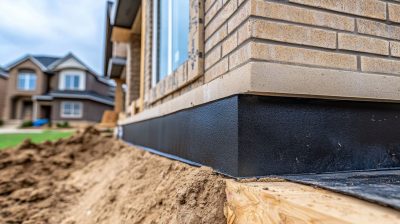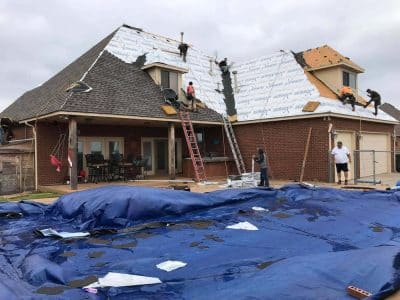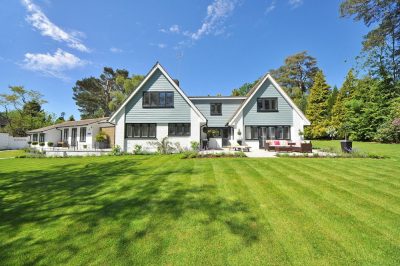
An energy-efficient home is designed to consume minimal energy while maintaining high comfort levels for its occupants. These homes are built using modern materials and technologies that reduce energy waste, optimize the use of renewable energy sources, and enhance long-term sustainability. By improving insulation, integrating smart technologies, and utilizing energy-efficient appliances, these homes not only save on energy bills but also contribute to reducing the carbon footprint. Below are the seven key characteristics of an energy-efficient home and the benefits they offer to both homeowners and the environment.
1. Superior Insulation
Insulation is one of the most critical factors in an energy-efficient home, as it prevents the loss of heat during the winter and keeps homes cool in the summer. Proper insulation helps maintain a stable indoor temperature, reducing the need for heating and cooling systems to work overtime. Modern insulation techniques include materials like spray foam, fiberglass, and cellulose, which can fill cavities and prevent air leaks.
For optimal efficiency, insulated concrete forms (ICFs) and house wraps are used in newer construction to prevent air infiltration. Insulating walls, roofs, and floors can cut energy bills by up to 50% depending on the region and home design. According to the U.S. Department of Energy, upgrading to superior insulation can reduce 10-50% of total energy consumption in homes.
Additionally, attic insulation alone can save homeowners around 10% on heating costs, while homes with insufficient insulation experience significant energy loss due to thermal inefficiency.
2. Use of Renewable Energy Sources
Energy-efficient homes commonly utilize renewable energy sources such as solar panels, wind turbines, or geothermal systems to generate electricity or heat. Solar panels, for example, convert sunlight into electricity, reducing dependency on conventional energy sources and lowering utility bills over time. Homeowners can save between $20,000 and $75,000 in energy costs over the lifespan of a solar panel system.
In sunny regions, solar energy can power nearly all of a home’s energy needs. Furthermore, adding solar panels can increase a home’s resale value by an average of 4.1% compared to homes without such systems.
Heat pumps are another efficient solution, using energy from the air or ground to heat and cool the home. Ground-source heat pumps (GSHPs) can reduce heating and cooling costs by up to 65% compared to conventional systems, making them an increasingly popular choice for energy-efficient homes.
3. Smart Home Technologies
Smart technology plays a crucial role in energy efficiency by allowing homeowners to monitor and control their energy consumption in real-time. Smart thermostats, for instance, adjust indoor temperatures based on the presence of occupants and the time of day, ensuring that energy isn’t wasted on heating or cooling when no one is home. These systems can save households around 10-30% on energy bills annually.
Other devices, such as motion sensors for lighting, smart plugs, and energy meters, help optimize energy use throughout the home. Smart home technology adoption is growing rapidly, and 81% of smart home users would be more likely to purchase a home if it already featured integrated smart systems.
4. Energy-Efficient Windows and Doors
Windows and doors are common areas where energy loss occurs in a home. Energy-efficient homes are equipped with double or triple-glazed windows that use low-emissivity (Low-E) coatings to minimize heat transfer. These windows trap heat during winter and prevent excessive heat gain during summer, reducing the load on heating and cooling systems.
Switching to energy-efficient windows can save homeowners up to $583 per year on energy costs, while homes with inefficient windows collectively waste about $50 billion annually in the U.S. alone due to energy loss.
Furthermore, well-sealed windows and doors help prevent drafts, which can drastically improve the overall thermal performance of a building.
5. Efficient Lighting and Appliances
Lighting and appliances are responsible for a significant portion of a home’s energy consumption. LED lighting, for example, uses up to 90% less energy than incandescent bulbs and lasts significantly longer, reducing energy consumption and cutting lighting costs by 50-75%.
Energy Star-rated appliances are designed to use less electricity without compromising performance. For instance, Energy Star-rated refrigerators, washing machines, and dishwashers can reduce energy use by 10-50%, depending on the model and usage habits. On average, upgrading to energy-efficient appliances can save a household $100-300 annually.
6. Water Conservation Technologies
Water heating accounts for a substantial portion of energy use in many homes. Tankless water heaters provide hot water on demand, reducing standby energy loss and lowering energy consumption by 8-34% compared to traditional water heaters. Homeowners who switch to tankless systems can save $100 or more annually on energy bills.
Additionally, low-flow faucets and showerheads can conserve up to 50% of water usage, which translates to both water and energy savings. Implementing smart water management systems that monitor leaks and optimize usage can further reduce consumption and lower monthly bills.
7. Passive Design Strategies
Passive design takes advantage of natural elements such as sunlight, wind, and thermal mass to maintain a comfortable indoor environment with minimal energy use. Strategic window placement maximizes natural sunlight in winter, reducing heating needs, and provides shading in summer to limit cooling demands.
Thermal mass materials, such as concrete or brick, can absorb heat during the day and release it slowly at night, creating a stable indoor climate. Homes designed with passive strategies can reduce their energy needs by up to 30% without the need for complex mechanical systems.
Landscaping can also enhance energy efficiency by using trees and shrubs to provide natural shading, further reducing the need for artificial cooling.
Benefits for Occupants and the Environment
Energy-efficient homes offer a wide range of benefits for homeowners and the environment:
- Significant Cost Savings: Energy-efficient homes can reduce energy bills by up to 30% by using renewable energy sources, smart technology, and efficient appliances. Upgrading to high-performance windows, appliances, and lighting can result in thousands of dollars saved over time.
- Increased Comfort: With proper insulation, air sealing, and smart home technologies, energy-efficient homes maintain a consistent indoor temperature, improving comfort. Homes that are well-insulated and designed for efficiency also reduce drafts and noise pollution.
- Environmental Impact: These homes reduce reliance on fossil fuels and decrease greenhouse gas emissions, helping mitigate climate change. Residential buildings account for approximately 20% of global carbon emissions, so reducing energy consumption through efficiency is critical.
- Higher Property Value: Energy-efficient homes are increasingly sought after by buyers due to their lower operating costs and environmental benefits. Studies show that homes with energy-efficient features sell faster and at higher prices, with resale values increasing by an average of 3-5% for homes with high energy ratings.
Conclusion
In conclusion, energy-efficient homes provide a sustainable and cost-effective solution for modern living. By incorporating advanced insulation, renewable energy systems, smart technologies, and passive design, these homes not only reduce energy consumption but also offer long-term financial and environmental benefits.









